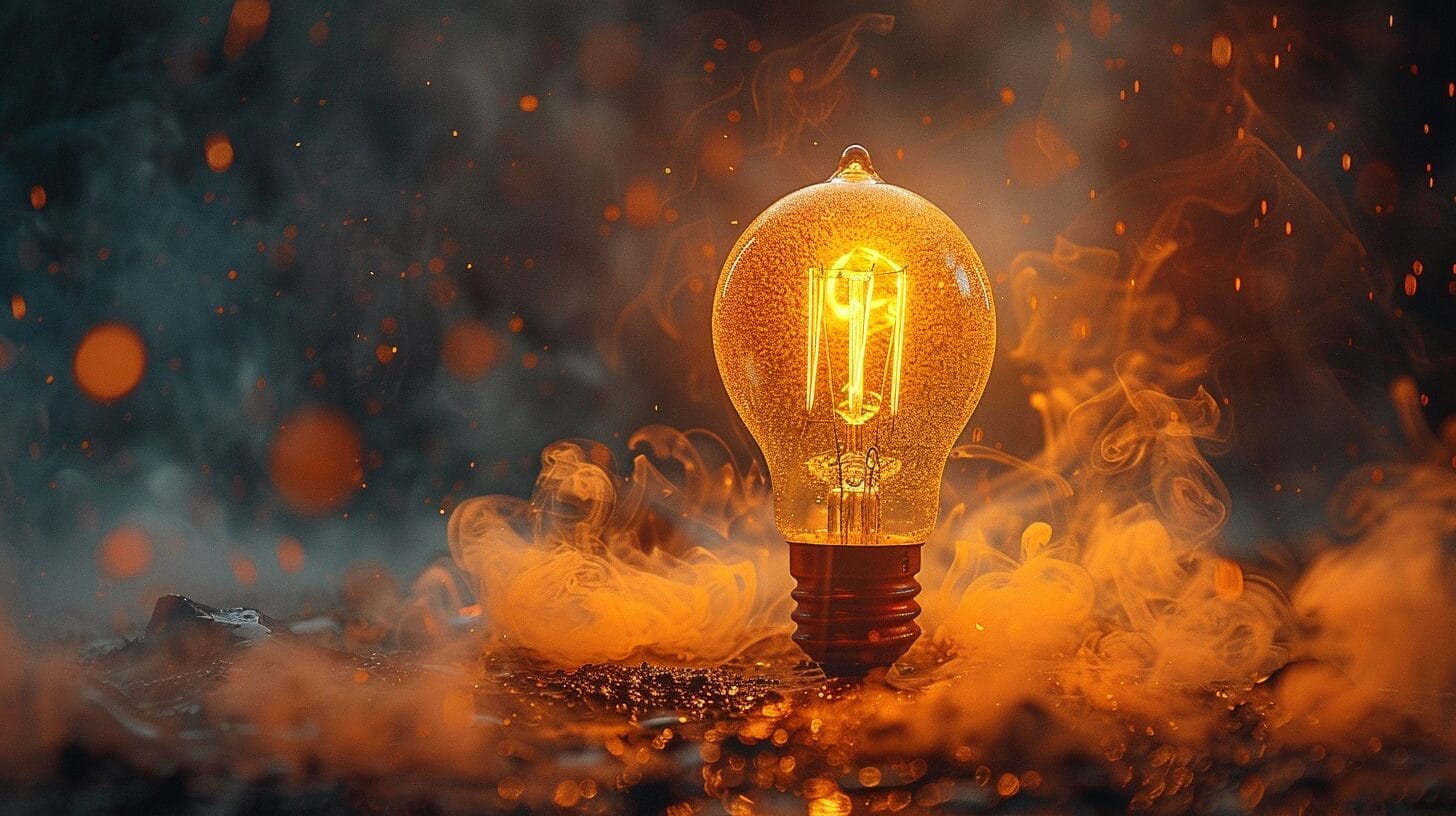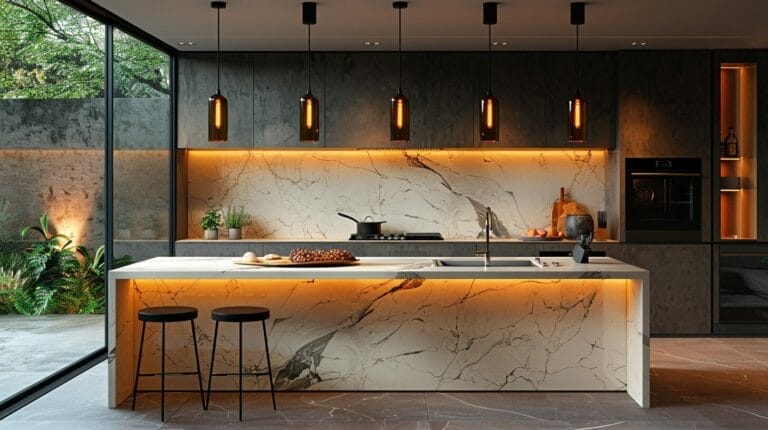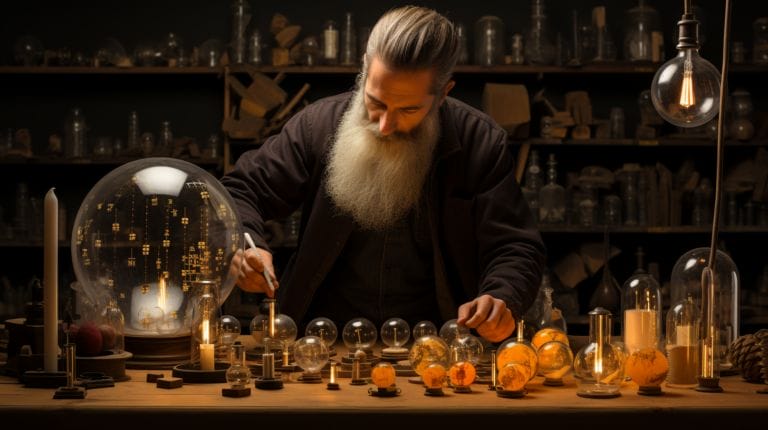What Type of Energy Does a Light Bulb Produce: Lighting 101
What type of energy does a light bulb produce? Light bulbs primarily emit radiant energy, transforming electrical energy into light and heat. This conversion process varies depending on the bulb type, such as incandescent, fluorescent, or LED. Understanding the energy output of different bulbs is crucial for selecting the most efficient and suitable option for your needs. Let’s delve into the various types of energy produced by light bulbs and their implications for everyday use.
Key Takeaways
- Light bulbs primarily produce light energy by converting electricity.
- Some heat energy is also generated during the conversion process.
- Different bulb types vary in energy efficiency and heat production.
- LEDs are energy-efficient, producing minimal heat and consuming less power.
- Understanding energy transfer optimizes light output and conserves resources.
Understanding the Basics: What Type of Energy Does a Light Bulb Produce?

To grasp the type of energy a light bulb produces, we must first comprehend the fundamental science behind its operation. Light bulbs primarily transform electrical energy into light energy. This process begins when electricity flows through the bulb’s filament, a thin wire typically made of tungsten. The filament heats up and emits light due to the resistance it encounters from the electricity. Some of the electrical energy is also released as heat, a byproduct of the conversion process. Thus, light bulbs also produce a small amount of heat energy.
Different types of light bulbs, such as incandescent bulbs, use a small amount of gas within the bulb to aid the conversion process and extend the filament’s lifespan.
Investigating the Question: Why Do Light Bulbs Get Hot?

Heat energy plays a significant role in light bulb operation. When an electric current passes through the filament, it encounters resistance, causing the filament to heat up and emit light. This conversion of electrical energy into light and heat energy is a key principle behind traditional incandescent bulbs.
Different light bulb types vary in their heat production:
| Light Bulb Type | Heat Production |
|---|---|
| Incandescent | High |
| LED | Low |
| CFL | Moderate |
| Halogen | High |
Incandescent and halogen bulbs generate higher levels of heat, while LED and CFL bulbs are more energy-efficient, producing less heat. Understanding these differences is important for choosing the right lighting option.
Exploring the Light Produced by Different Bulb Types
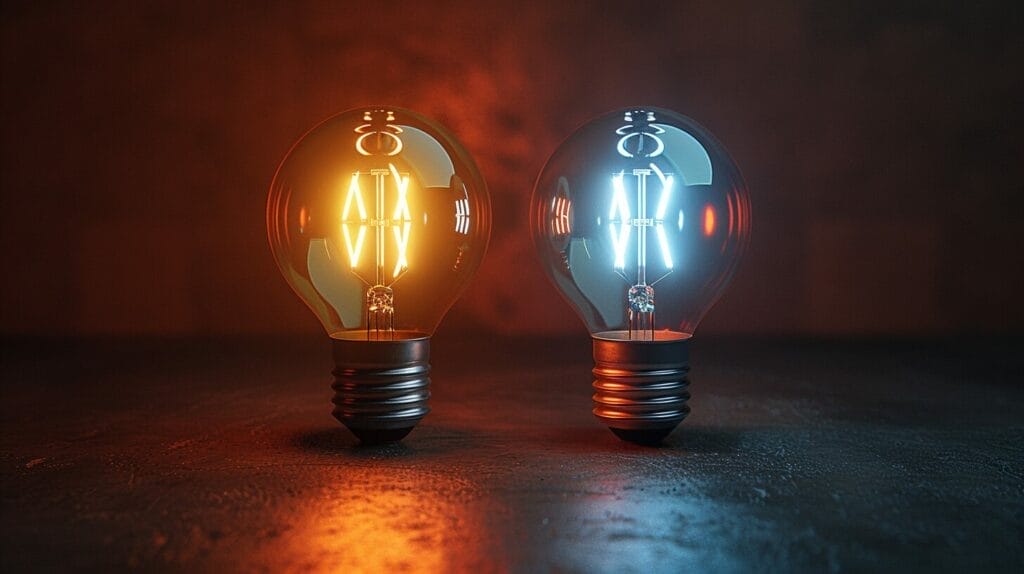
Let’s examine the light emitted by various types of light bulbs:
- Incandescent Bulbs: Despite their bright light, these bulbs are less efficient, converting a significant portion of electric energy into heat.
- LEDs: These bulbs use semiconductors to convert electricity into light with minimal heat loss, making them a popular choice for modern lighting solutions.
- Halogen Bulbs: A type of incandescent bulb that uses a small amount of halogen gas to increase efficiency and provide a brighter, whiter light.
- Fluorescent Bulbs: These bulbs operate by exciting mercury vapor, producing ultraviolet light that stimulates a phosphor coating inside the bulb to emit visible light. They’re more efficient than incandescent bulbs but require proper disposal due to their mercury content.
The Case for Energy-Efficient Lighting: Why LED Bulbs are the Future
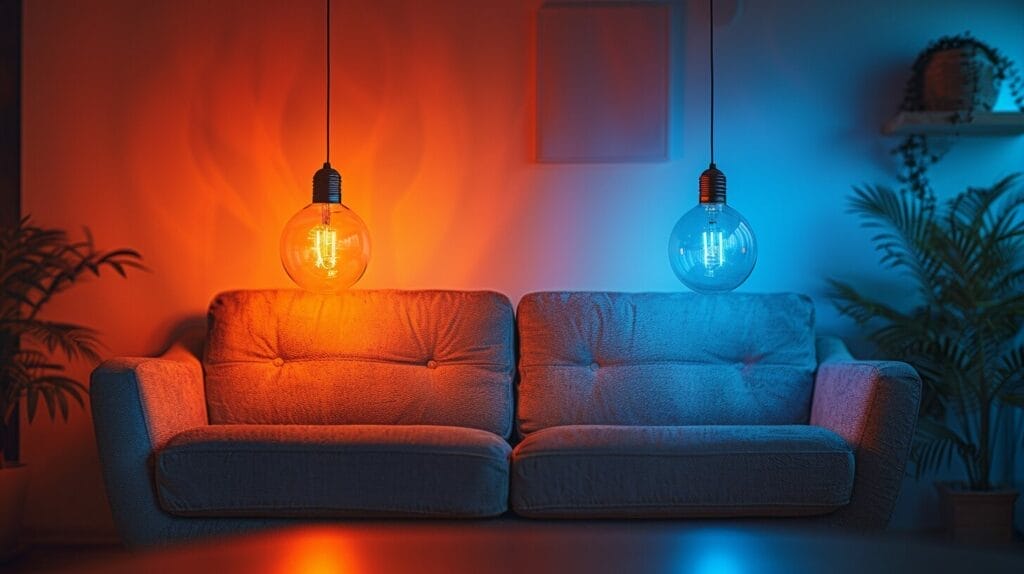
The future of lighting is undoubtedly moving towards LED bulbs. These bulbs are highly energy-efficient, consuming less power than traditional incandescent or fluorescent bulbs. They’re not only environmentally friendly but also cost-effective due to their longer lifespan.
LEDs produce bright, high-quality light while using minimal energy, making them ideal for both residential and commercial applications. With technology advancements, LEDs continue to improve, offering even greater energy savings and lighting performance.
Conservation, Not Destruction: Understanding Energy Transfer in Light Bulbs
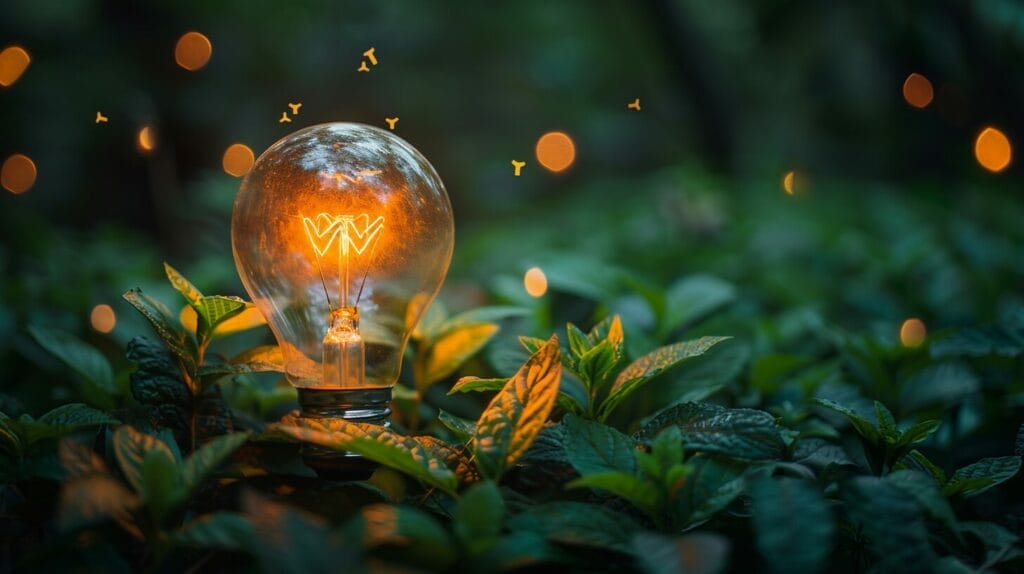
Understanding the intricate process of energy transfer within light bulbs is essential for promoting conservation rather than destruction of resources. When it comes to energy conservation in light production, considering the efficiency of energy transfer is key. Here’s why:
- Optimizing Energy Transfer: Efficient energy transfer within light bulbs ensures minimal energy wastage and maximum light output.
- Utilizing Inert Gases: Vital gases play an important role in energy conservation within light bulbs by reducing heat loss and enhancing light production.
- Maximizing Light Output: Proper energy transfer mechanisms lead to brighter illumination using minimal energy, promoting sustainability.
- Enhancing Lifespan: Effective energy transfer not only conserves energy but also extends the lifespan of light bulbs, reducing the frequency of replacements and overall resource consumption.
Conclusion
To sum up, light bulbs primarily produce light energy by converting electricity into illumination, with a small amount of heat energy as a byproduct. Understanding the types of energy produced by different bulb types is essential for selecting the most efficient lighting.
LED bulbs are the most energy-efficient option, producing minimal heat loss. Choosing energy-efficient lighting not only saves electricity but also helps in reducing environmental impact.
Frequently Asked Questions
How do light bulbs work?
Light bulbs work by converting electrical energy into light. When electricity flows through the bulb, it heats up a tungsten filament inside, causing it to produce light.
What is the difference between LEDs and traditional light bulbs?
LEDs (Light Emitting Diodes) are more energy-efficient than traditional incandescent bulbs. They also last longer and emit less heat, making them a popular choice for lighting.
Can light bulbs create light or just make it brighter?
Light bulbs create light by converting electrical energy into photons, which are the particles that make up light. The brightness of the light depends on the amount of electricity flowing through the bulb.
How does the filament in a light bulb play a role in lighting?
The tungsten filament in a light bulb is enclosed in a vacuum or filled with a gas to prevent it from burning out quickly. When electricity flows through the filament, it heats up and emits light.
Why do light bulbs sometimes require to be touched up against a wall or surface?
Some light bulbs are designed to be touch-sensitive for turning on or adjusting brightness levels. By touching the bulb against a specific surface, it can detect the change and adjust its light output accordingly.

